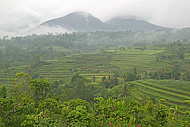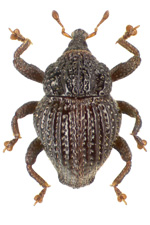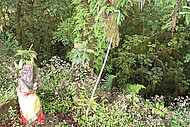Weevils from the “Island of Gods”

Mt. Batukaru vor Reisfeldern

Rüsselkäfer aus Bali

Eine hinduistische Statue am Rand des Regenwalds
Bali, also known as the “Island of Gods”, is a popular tourist destination. Nevertheless, its insect fauna is still good for new discoveries such as eight new species of the weevil genus
Trigonopterus. More importantly, these flightless beetles question two notions of biogeography: namely that Bali´s fauna is largely derived from Java and generally poor in endemics.
Alexander Riedel of the Natural History Museum Karlsruhe and his colleagues of the
Zoological Museum in Munich showed by analysing the weevil´s DNA and by subsequent modelling of their evolution and distribution that the newly discovered
Trigonopterus species had arrived on three different occasions on Bali. The researchers report in
Proceedings of the Royal Society B that the weevils arrived each time from the East, and not from the much closer island of Java in the West. Thus, they were transgressing „Wallace´ line“, a supposedly major faunal barrier. Subsequently, evolution turned the arrivals into eight independent species found nowhere else but on Bali.
Unfortunately, the newly discovered beetles are endangered by the shrinking of their habitats. They are restricted to the few remaining areas of primary rainforests on Bali. Today, the island is dominated by the lush green of rice paddies, while the rainforest is limited to one National Park and a few volcanic mountains.

